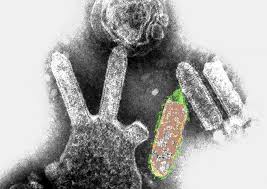Australian Bat Lyssavirus:

A death was reported due to Australian bat lyssavirus.
- Australian Bat Lyssavirus is a rare but deadly virus that can be transmitted from bats to humans through bites or scratches.
- It is closely related to the rabies virus and was first identified in 1996 in a fruit bat in northern New South Wales, Australia.
- The lyssavirus is a member of the Rhabdoviridae family, which also includes viruses that cause rabies.
- The virus has been discovered in flying foxes, fruit bats and insect-eating microbats throughout Australia.
- Human infection with bat lyssavirus occurs through direct contact with infected bat saliva via bites, scratches or open skin.
- It can also occur if our mucous membranes (eyes, nose, mouth) are exposed to bat saliva. There’s no risk associated with bat faeces, urine, blood, or casual proximity to roosts.
- The nature of the illness in humans mirrors rabies, beginning with flu-like symptoms (fever, headache, fatigue), then quickly progressing to severe neurological disease, including paralysis, delirium, convulsions, and loss of consciousness.
- Lyssavirus has no effective treatment once symptoms appear.




